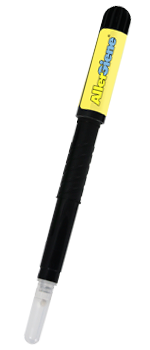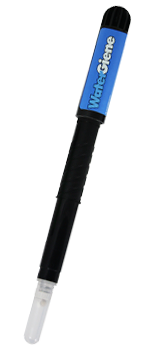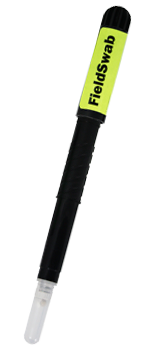ATP Tests for Sanitation Hygiene Monitoring
Sanitation/hygiene is integral to food safety, healthcare, hospitality, and other industries. In a food processing facility, undesired, microscopic substances can change food’s appearance, taste, and safety. Likewise, in healthcare facilities, undesired microorganisms in patient rooms or on surgical equipment can spread infection.
Charm Sciences provides ATP tests that allow customers to check for cleanliness on a microscopic level in a quick, cost-effective, and objective manner. These tests are performed in seconds and enable immediate remediation if needed.
ATP Sanitation Verification Tests Available:
PocketSwab Plus ATP Swab, AllerGiene ATP Swab, WaterGiene ATP Swab, and FieldSwab ATP Swab.
Benefits
-
-
- Quick results in only 5 seconds.
- Superior sensitivity with the novaLUM II-X technology.
- Wet and dry surface verification.
- Integrated data management software to track, trace, and trend results.
-
-
-
- Room-temperate stable swabs for up to 12 months.
- Recyclable components for reduced waste.
-
View Our ATP Testing Products
With patented designs and advanced technologies, our ATP provide rapid, accurate results for your testing.
PocketSwab Plus ATP Swab (Surface Hygiene Verification)
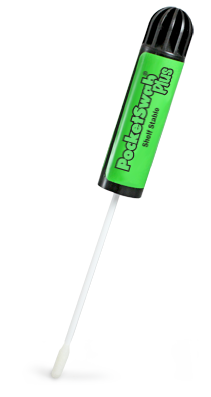 The PocketSwab Plus rapid ATP (adenosine triphosphate) swab is a room-temperature stable, self-contained, single service test that enables total surface hygiene verification in only 5 seconds, allowing real-time corrective action. The PocketSwab Plus ATP swab is relied on for cleaning verification and validation of sanitation and hygiene practices. The ATP swab helps prevent cross-contamination and microbial challenges caused by ineffective sanitation procedures.
The PocketSwab Plus rapid ATP (adenosine triphosphate) swab is a room-temperature stable, self-contained, single service test that enables total surface hygiene verification in only 5 seconds, allowing real-time corrective action. The PocketSwab Plus ATP swab is relied on for cleaning verification and validation of sanitation and hygiene practices. The ATP swab helps prevent cross-contamination and microbial challenges caused by ineffective sanitation procedures.
AllerGiene ATP Swab (Allergen Control)
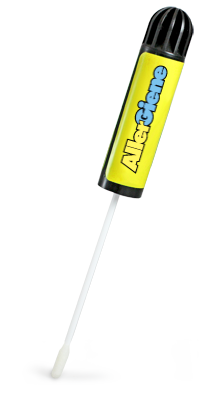 AllerGiene ATP swab is an ATP-based allergen control test designed to prevent cross-contact from allergenic food soil on process equipment. It measures ATP (adenosine triphosphate) at low levels as an indicator for the presence of food on wet-cleaned surfaces or rinse waters. The AllerGiene swab is a simple 20-second test with sufficient high sensitivity to allergenic food residues. The swab achieves detections comparable to specific allergen methods — 0.1 to 25 ppm for most of the eight allergen food groups: peanut butter, wheat, soybeans, crustacean (shrimp), milk, tree nuts, egg, and sesame.
AllerGiene ATP swab is an ATP-based allergen control test designed to prevent cross-contact from allergenic food soil on process equipment. It measures ATP (adenosine triphosphate) at low levels as an indicator for the presence of food on wet-cleaned surfaces or rinse waters. The AllerGiene swab is a simple 20-second test with sufficient high sensitivity to allergenic food residues. The swab achieves detections comparable to specific allergen methods — 0.1 to 25 ppm for most of the eight allergen food groups: peanut butter, wheat, soybeans, crustacean (shrimp), milk, tree nuts, egg, and sesame.
WaterGiene ATP Swab (Water Sanitation Verification)
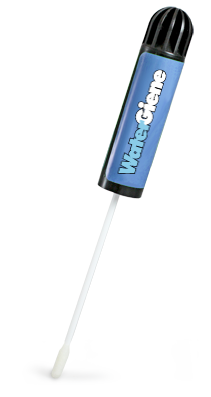 WaterGiene ATP swab detects ATP in water, including CIP water, rinse waters, and cooling water. The test measures water cleanliness in 20 seconds by measuring total ATP. High ATP levels indicate that microorganisms, food, and other biologicals are present in the water.
WaterGiene ATP swab detects ATP in water, including CIP water, rinse waters, and cooling water. The test measures water cleanliness in 20 seconds by measuring total ATP. High ATP levels indicate that microorganisms, food, and other biologicals are present in the water.
FieldSwab ATP Swab (Outdoor Sanitation Monitoring)
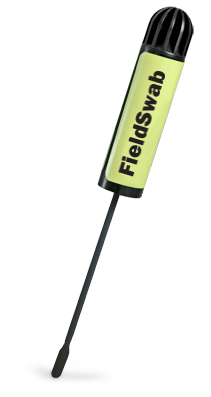 FieldSwab ATP swab enables food safety programs to be implemented outdoors. Like the PocketSwab Plus ATP swab, the FieldSwab test rapidly detects ATP (adenosine triphosphate) as a measure of surface cleanliness. This is done by measuring the light units produced when ATP reacts with luciferin/luciferase. The FieldSwab test has a light-blocking cover to prevent interferences from daylight and uses a specially calibrated channel on the novaLUM II-X system.
FieldSwab ATP swab enables food safety programs to be implemented outdoors. Like the PocketSwab Plus ATP swab, the FieldSwab test rapidly detects ATP (adenosine triphosphate) as a measure of surface cleanliness. This is done by measuring the light units produced when ATP reacts with luciferin/luciferase. The FieldSwab test has a light-blocking cover to prevent interferences from daylight and uses a specially calibrated channel on the novaLUM II-X system.
novaLUM II-X System (Luminometer)
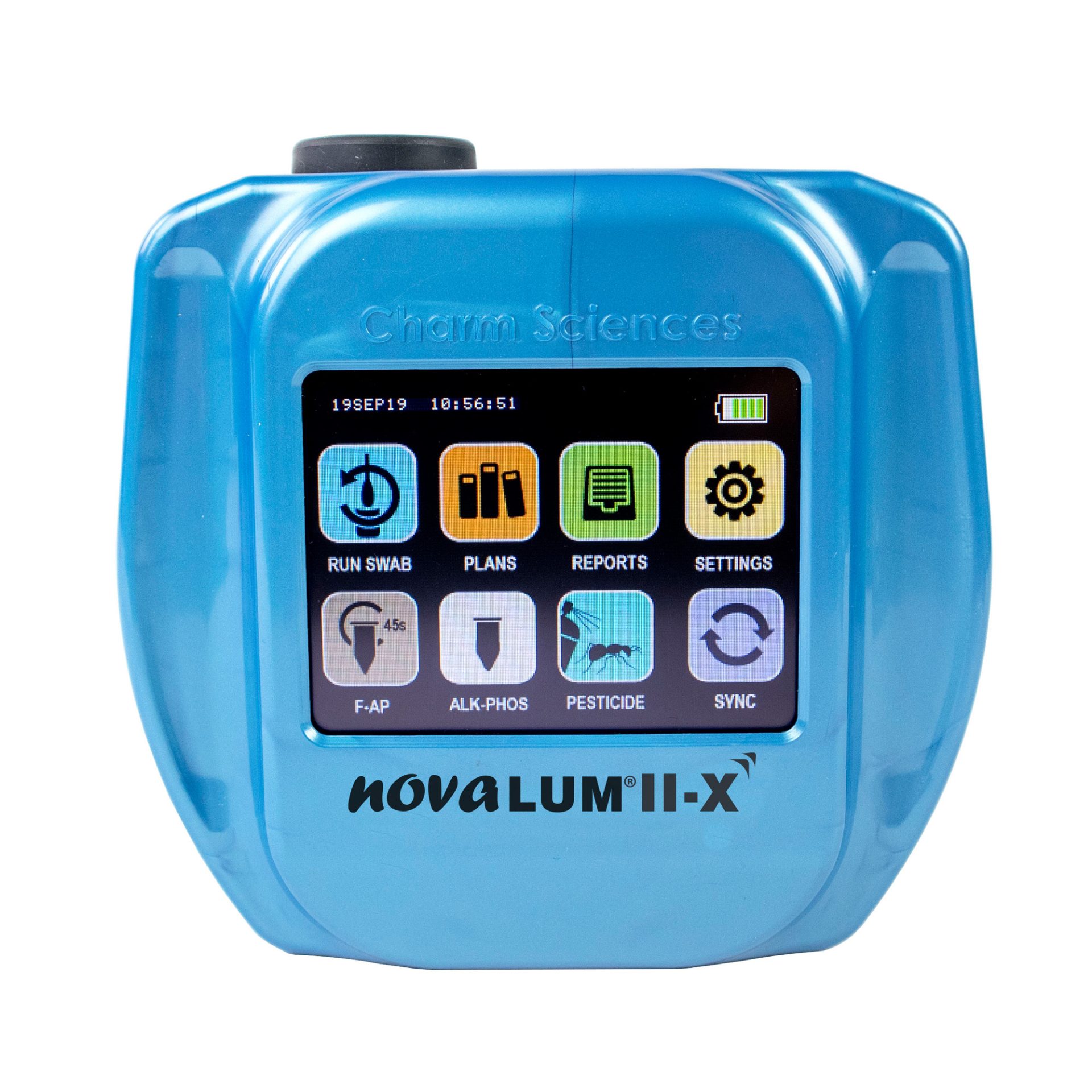 The novaLUM II-X system is a palm sized luminometer that offers superior science for advanced sanitation control. It utilizes a technologically advanced photomultiplier tube (PMT) that amplifies ATP (adenosine triphosphate) allowing detection of lower levels of microbial and organic contamination.
The novaLUM II-X system is a palm sized luminometer that offers superior science for advanced sanitation control. It utilizes a technologically advanced photomultiplier tube (PMT) that amplifies ATP (adenosine triphosphate) allowing detection of lower levels of microbial and organic contamination.
Charm Swab Extender
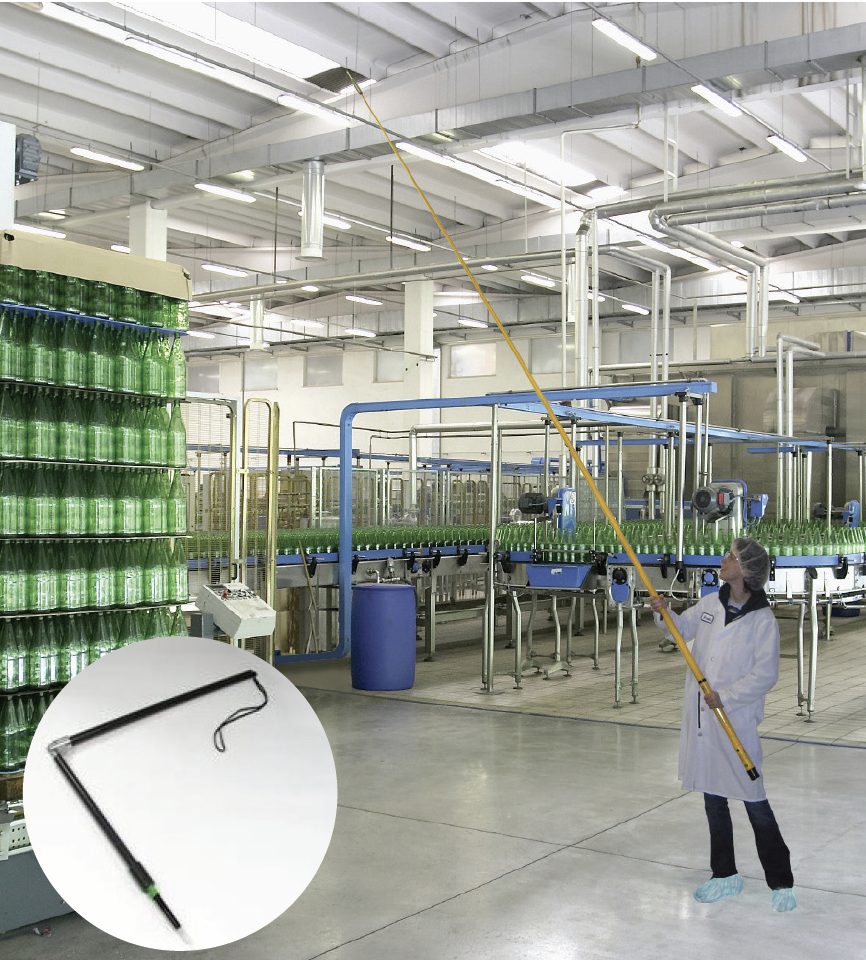 Adjust the Charm Swab Extender for different lengths and angles to obtain samples in hard-to-reach areas. Simply lock the relevant Charm ATP swab into the extender and adjust the angle to reach your target location. It is available in 3 and 16-foot lengths. The 16-foot extender has several telescopic length options: 2.25 feet and extends in seven 2-foot increments.
Adjust the Charm Swab Extender for different lengths and angles to obtain samples in hard-to-reach areas. Simply lock the relevant Charm ATP swab into the extender and adjust the angle to reach your target location. It is available in 3 and 16-foot lengths. The 16-foot extender has several telescopic length options: 2.25 feet and extends in seven 2-foot increments.
Swab sites include tank and silo interiors, undersides of conveyor belts, rollers, packaging equipment, pallet trucks, CIP lines, hoppers, guard covers, overhead piping (for condensate), truck lines, walls, doors, ceilings, windows, beams, light fixtures, vents, floor drains, HVAC systems, filtration systems, and more.
Industries
ATP Testing FAQs
Review our frequently asked questions about ATP testing.
What Is ATP Testing?
Industries such as food and beverage processing, hospitality, and the water sector use rapid ATP tests to quickly assess samples or surfaces’ cleanliness.
Living cells and organic matter use Adenosine Triphosphate (ATP), the universal unit of energy. Most microbial cells and foods contain some level of naturally occurring ATP. ATP swabs with luminometers detect residual ATP as an indicator of surface cleanliness.
What Does ATP Testing Do?
ATP testing detects the presence of residual ATP. Since ATP comes from living cells and organic matter, its presence or absence indicates whether the surface is clean.
How Do You Measure ATP Levels?
You measure ATP levels using a swab and a luminometer. The swab collects the sample, and the luminometer checks for the presence of ATP on the swab. Charm Sciences’ luminometers use light-sensitive photomultiplier tubes (PMTs) to detect low levels of contamination.
How Do You Use an ATP Meter?
Follow these steps to use an ATP Test swab and luminometer:
- Pull the handle out of the swab, avoiding contact with the foam tip.
- For a flat surface, lightly press the swab across a 4-inch by 4-inch area of the testing surface. Move the swab back and forth while rotating it.
- For a non-flat surface, standardize a consistent surface area to swab while considering the internal and external areas (i.e., pipes). Rotate the swab tip 360°.
- For a liquid sample, swirl the swab tip for 5 seconds in the water source – either free-flowing or sampled in a sterile container.
- Insert the swab back into the handle. Twist the swab down to activate it, then keep the swab in a vertical position.
- Shake the swab from side to side while keeping it upright until the white tablet dissolves.
- Insert the swab into the luminometer and press the “Run Test” button. The luminometer will provide results in seconds.
How Accurate Is ATP Testing?
ATP testing is highly accurate as an early indicator of biological contamination. Charm Sciences’ ATP tests reliably pick up the following organic sources at lower levels than similar tests:
- Living cells
- Dead cells
- Biofilms
- Foods
- Plant and animal cells
- Bodily fluids
- Organic soils
What Is the Difference Between a PMT and a Photodiode?
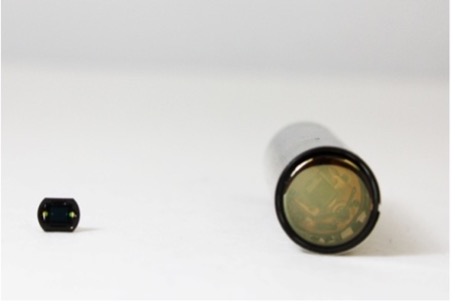 Charm has developed scientifically advanced swab chemistry for effective sanitation. Charm utilizes a PMT, while other systems use a photodiode to detect light produced by the ATP reaction.
Charm has developed scientifically advanced swab chemistry for effective sanitation. Charm utilizes a PMT, while other systems use a photodiode to detect light produced by the ATP reaction.
The distinction between a PMT and photodiode lies in their light detection and amplification mechanisms. PMTs are vacuum tube devices that amplify even the slightest signal to detect the lowest level of contamination, whereas photodiodes do not. The amplified signal enhances the instrument’s overall sensitivity, making PMTs particularly advantageous when detecting faint bioluminescence is essential.
In contrast, photodiodes may be suitable for less demanding applications where the emphasis is on simplicity and cost-effectiveness rather than sensitivity and signal amplification.
The combination of Charm’s patented swab design and built-in shutter keeps external light out, so the PMT reads only the light from the bioluminescent reaction. Additionally, each Charm luminometer uses a rechargeable Li-Ion for portability, durability (i.e., longer life compared to AA batteries), convenience, and environmental considerations.
The Charm ATP Advantage
Charm Sciences offers an industry-leading ATP hygiene monitoring system that stands above the rest in terms of the impact of temperature and time on the repeatability and accuracy of test results.
- Highly sensitive ATP monitoring system that combines three essential components — the test device design, the bioluminescence chemistry, and the luminometer — to outperform the rest.
- State-of-the-art, custom-specified PMTs for detecting ATP.
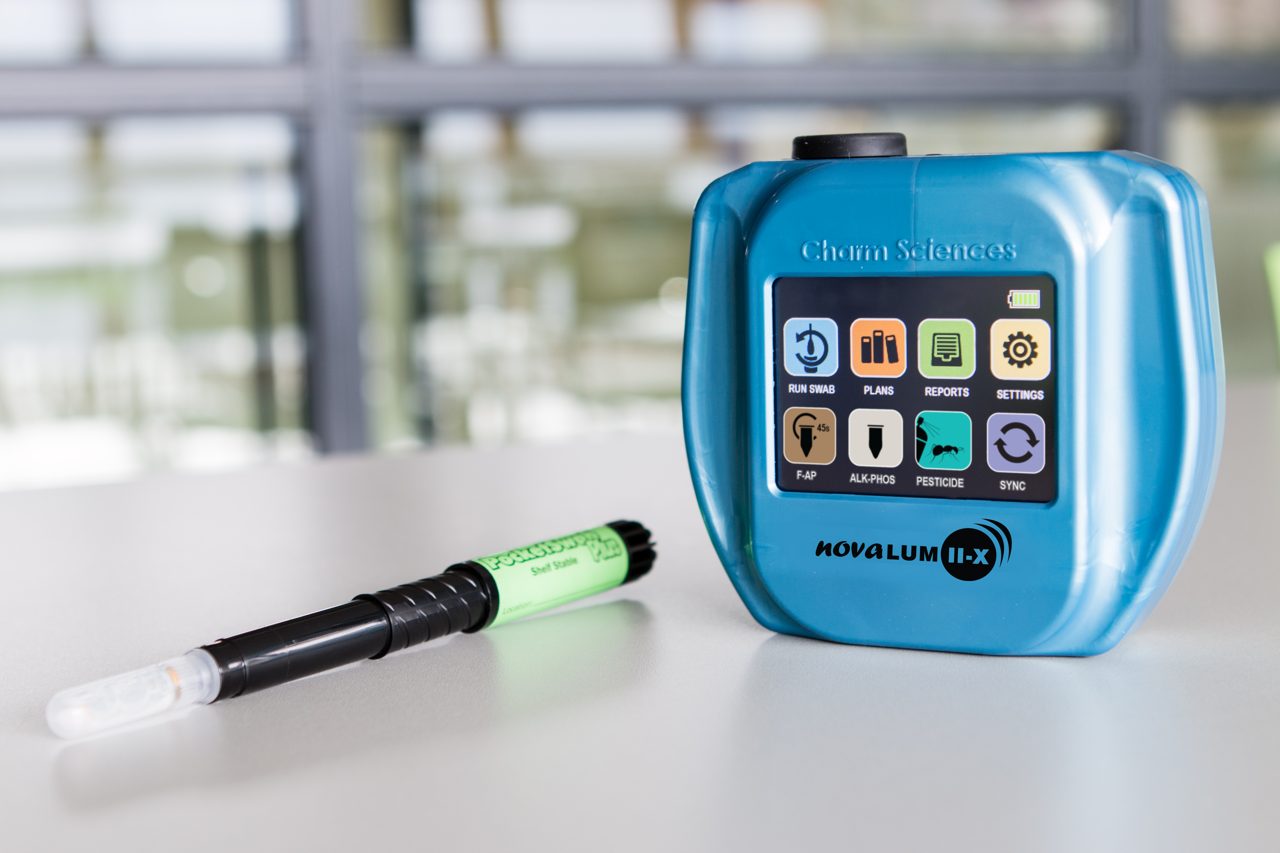
Contact Sales
Have a sales question? Send us a message and a sales representative will contact you.


